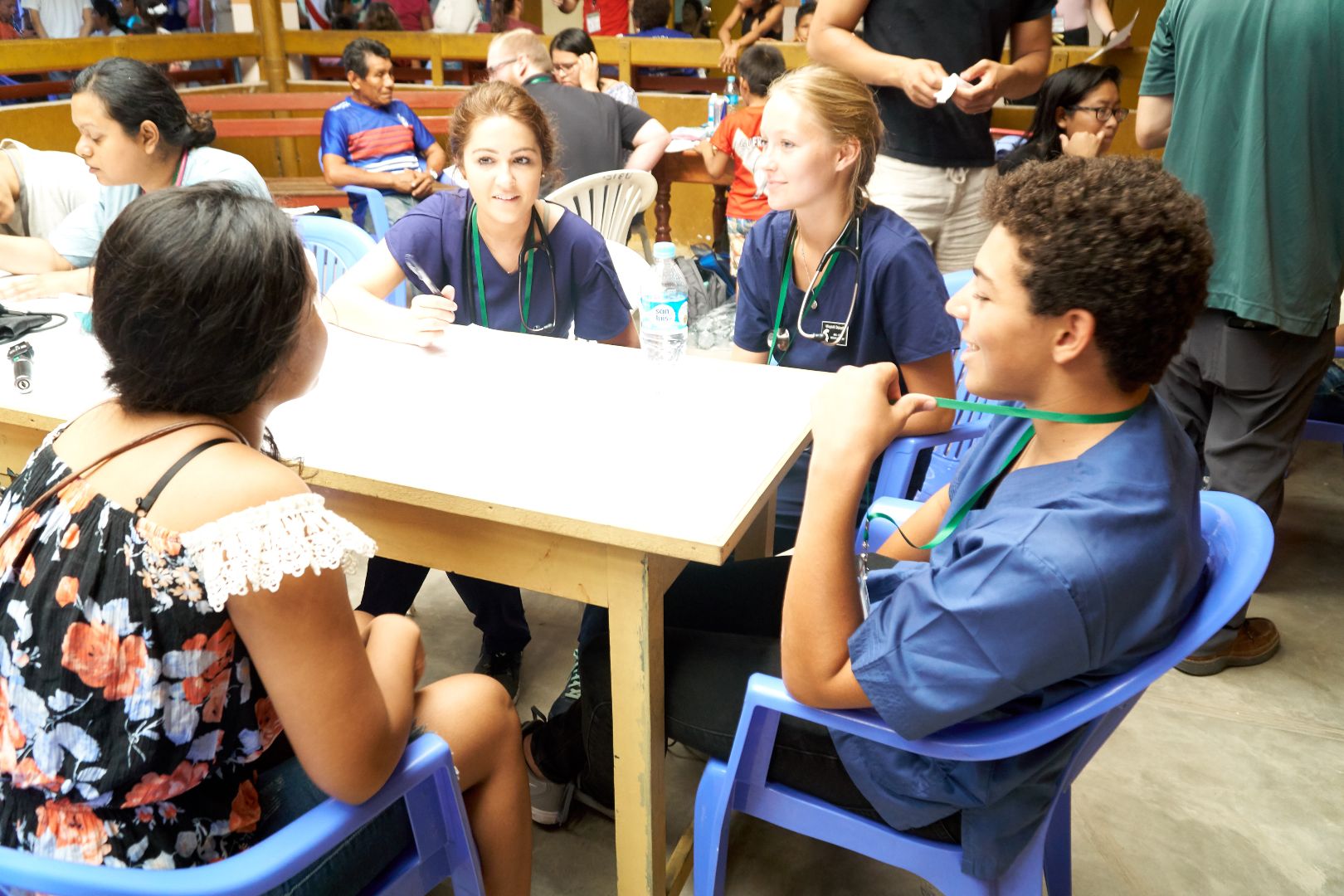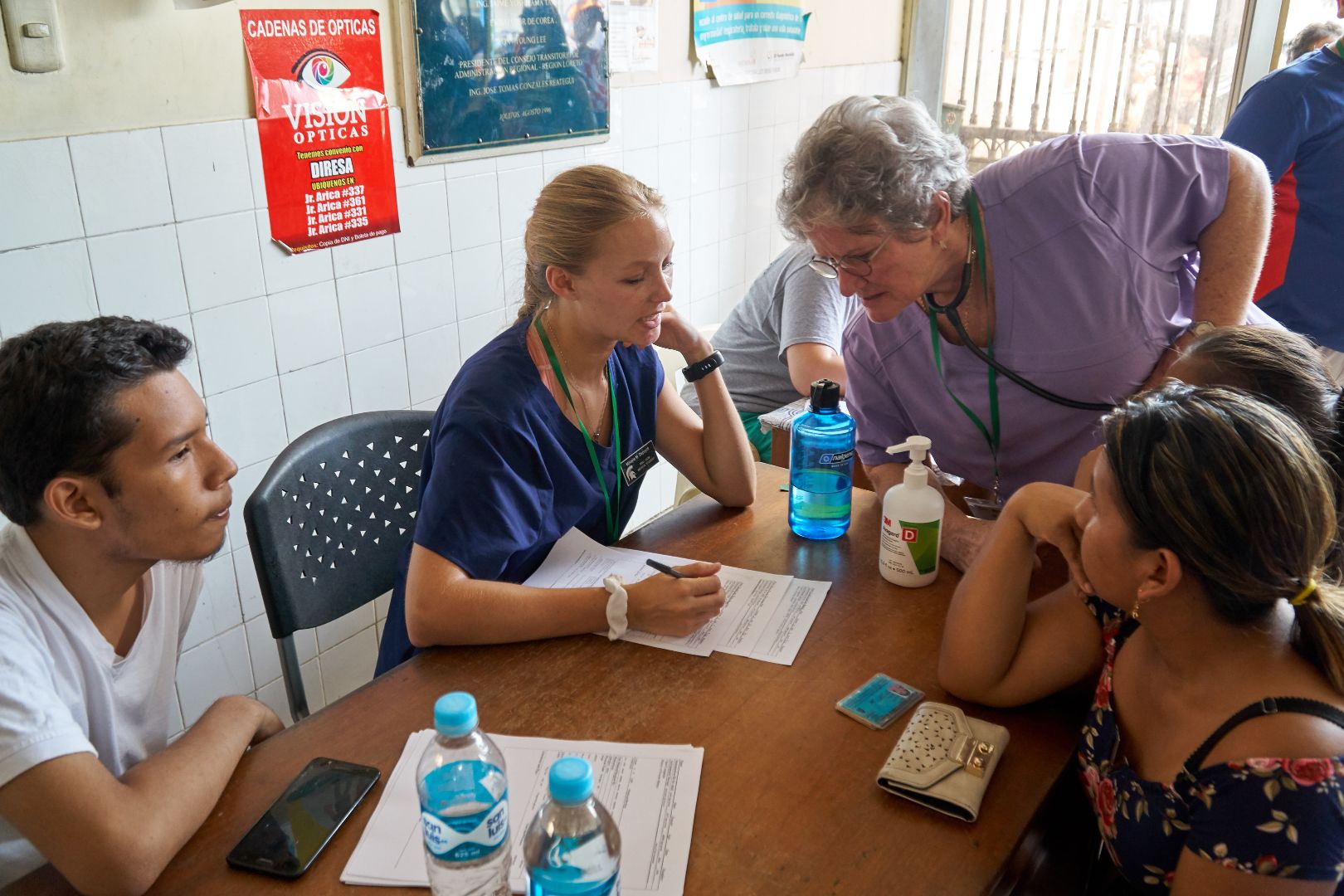
Mentally planning for this program, I knew it was going to be difficult – I didn’t speak Spanish and I was only a second year medical student that has just scratched the surface of medical knowledge. After months of packing and planning, we were finally in Peru. Inspired by the atmosphere of community and collaboration among my travelling peers, we set up clinic in a town called Iquitos for four days. Then, we took a boat, the Amazon Queen, down the Amazon River and went to three different villages to see patients. As we approached the shore of one of the villages, I could see some heads creeping over the edge of the riverbank. There was no doubt in our group’s collective mind, the expectation for medical service was high, some of our visitors had traveled two hours on foot to come see us. Despite the extreme heat that peaked in the mid 90s, we made it our job to see every patient that came to our clinic and gave them at least vitamins and a toothbrush and toothpaste.
Although the language barrier was challenging at first, I had a talented translator and was able to make authentic connections with the people I saw. As the day went on, I started catching onto phrases to ask them or gestures to indicate what physical exam I was going to do, like listening to their heart and lungs. While attending to these patients, it was hard to not be aware of the tight setup on the boat - I was within a foot of another student who was also seeing patients. In this environment I had to be flexible and learn to adapt to the conditions I was in. Once I started to see patients, I didn’t notice the heat anymore, I only cared about helping the person in front of me.
At the end of the day we would all be exhausted, sweaty, and 
Name: Mikayla Depuydt
Status: 2nd Year Medical Student
Major: Osteopathic Medicine
Hometown: Gladstone, Michigan
Program: College of Osteopathic Medicine Service Learning in Peru